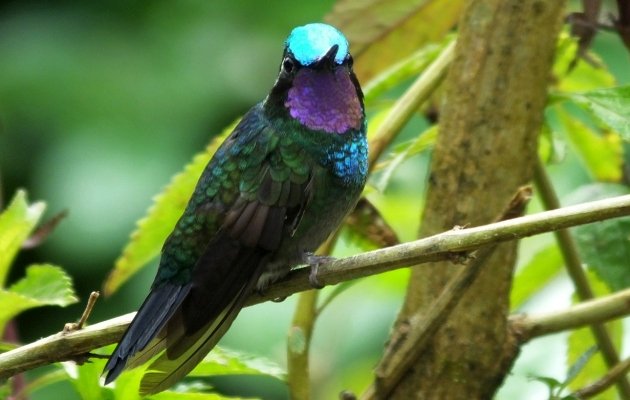
Poas Volcano isn’t just a mountain built with magma. In common with so many other volcanoes, Poas also houses farms, people, and forests full of birds. Strawberries are grown year round, visit the area and young locals will let you know. They hold up boxes of strawberries as you drive past, loudly exclaiming, “Fresas! Freeesas!” Soaking up nutrients from volcanic soils and shaded with black fabric, the small fruits are a tasty piece of Poas. In the pastures, Holsteins munch lush grass and make future cheese where cloud forest once stood. Luckily, not all of the land on Poas has been shorn of trees. Remnant, epiphyte covered members of the old cloud forest still dot the open areas, patches persist and, in the national park and on the northern slopes of the volcano, more extensive areas of forest thrive.
Eastern Meadowlarks, cowbirds, grackles, and a few other birds are at peace with the cows but for most birds on Poas, the forest is where life is living large. When birding the area, I usually walk along the upper part of the road; that’s where the best forest is. You find it in the national park too but ever since the volcano acted up a few years ago, those areas of forest have become inaccessible, the trails in the park have been closed. At least most of the resident species can still be seen right along the road, you just have to keep an eye out for cyclists and vehicles on their way up and down the volcano. If you don’t feel like walking (at 8,000 plus feet, you might not), no problem, you can still see a lot of birds by birding in place.
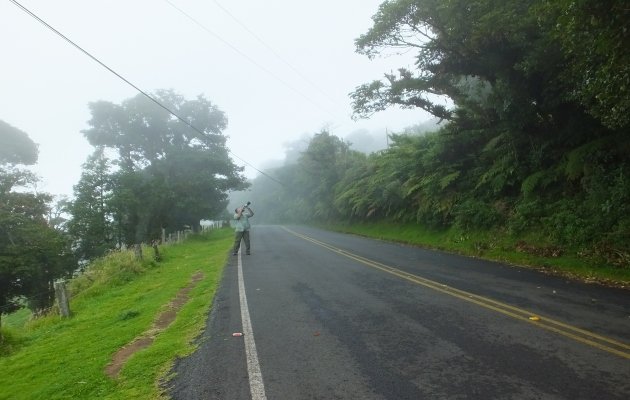
Just like it sounds, birding in place is watching birds from one spot. Bring a stool to sit on, accompany it with a few choice drinks and snacks and see what happens. You can do it with focused Big Sit intent or mix birding time with a good read; slow bird the spot. Either way, its all good, its still birding and if you try it in the right places on Poas, the avian treats will delight you. The following examples are some of the birding experience that awaits on Poas Volcano, Costa Rica:
The Voices of Understory Birds
Listen close and you might hear the repeated calls of Buff-fronted Quail-Dove and Highland Tinamou. This pair of shy ground birds don’t usually approach the road but it doesn’t hurt to watch for them. The staccato song of the Silvery-fronted Tapaculo can also be heard and the high pitched calls of the Wrenthrush sound off in the dense undergrowth. Expect to hear thrushes too, the flute-like songs of Ruddy-capped and Black-billed Nightingale-Thrushes will remind you of thrushes from more familiar haunts.
Quetzals, Prong-billed Barbets, and other Frugivores
Bird in place near the right fruiting tree and a quetzal may fly into view (seriously!). This shimmering mega species is regular on Poas and, when feeding, is often joined by the Black Guan, an arboreal black turkey-like bird with a blue face. Trees with smaller fruits are easier to find and often host the Black-and-yellow Silky-Flycatcher, a thrush-sized unique cousin of the Phainopepla. Chunky Prong-billed Barbets can also make an appearance along with smart looking Sooty-capped Chlorospingus (aka bush-tanager…), and the literally brilliant Golden-browed Chlorophonia.
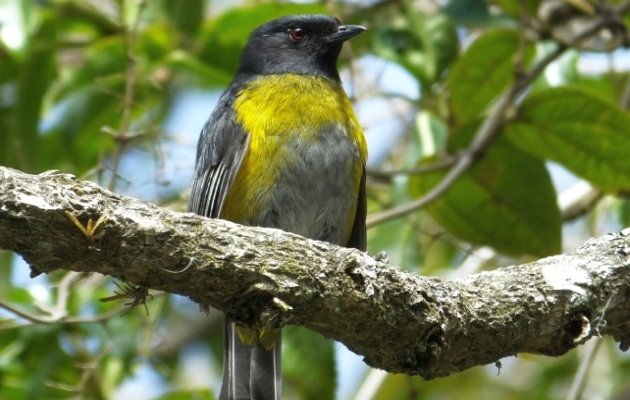
Cricket Chirping Long-tailed Silky-Flycatchers
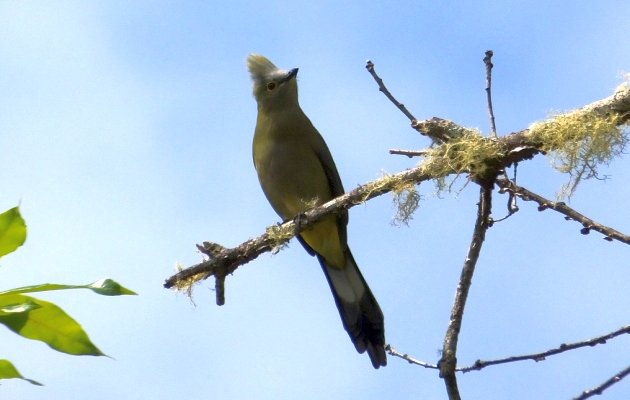
Scan the tree tops and you might see a second species of silky-flycatcher, this one shaped more like the Painopepla but graced with a long, elegant tail and sleek, soft gray and yellow plumage. These crested beauties love to perch high in the canopy and often move between trees with undulating flight. They also call a lot. As you enjoy the scenery from Poas, you will probably hear their cricket-like voices.
Mixed Flocks
If you get lucky while slow birding on Poas, a mixed flock will move through the field of view. Also known as a bird wave, this is when a bunch of birds forage together, often quickly moving through an area of vegetation. Its a situation every birder would love to be in even if it can be a momentary rush of avian confusion. On Poas, the regular bird wave members can include everything from hefty Spot-crowned Woodcreepers and Buffy Tuftedcheeks to creeping Ruddy Treerunners, chattering Red-faced Spinetails, Flame-throated Warblers, and Yellow-winged Vireos. Such birding happiness is usually led by a bunch of Sooty-capped Chlorospinguses and can always include various other species. Just keep watching!
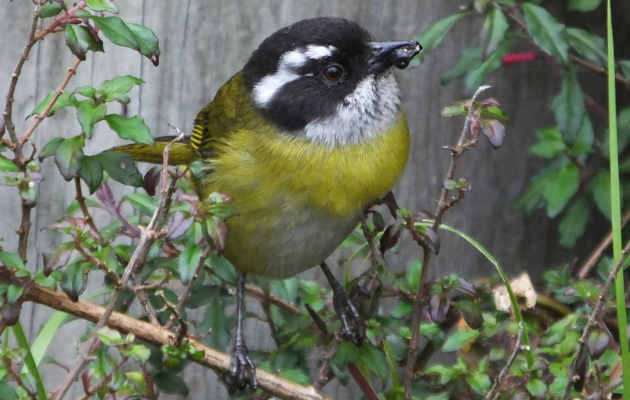
Glittering Sprites
As with everywhere in Costa Rica, hummingbirds are also part of the birding show on Poas. The two most common species are Fiery-throated Hummingbird and Volcano Hummingbird (the subspecies that occurs on Poas and Barva is often known as Cerise-throated Hummingbird and could be a potential split).
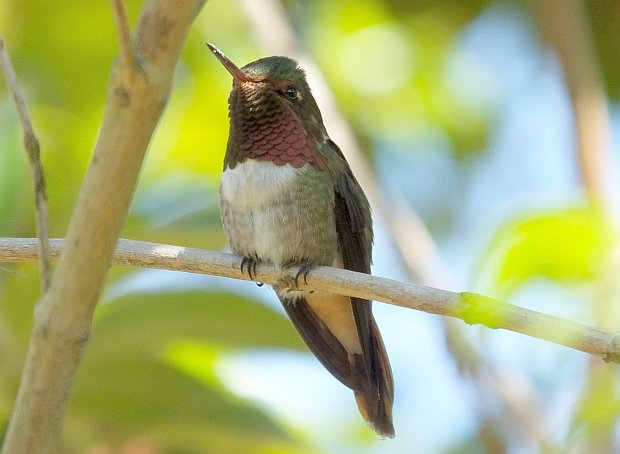
Sooner or later, both of these glittering birds will make themselves known, either with high pitched calls or by flying into view, maybe even too close for pictures (that can happen while birding in place on Poas). The other regular hummingbirds are the big Talamanca Hummingbird, the Lesser Violetear, and the Purple-throated Mountain-gem.
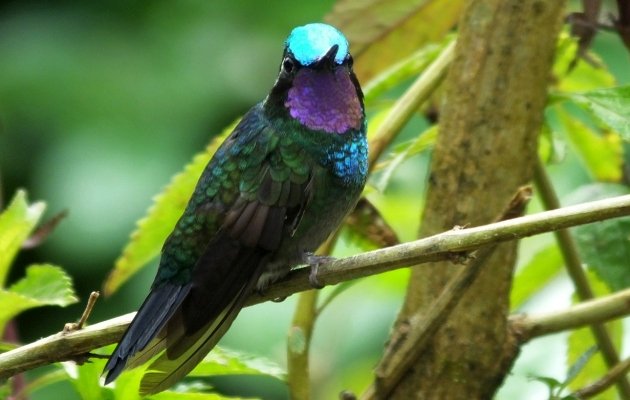
These are a small sampling of the birds possible while birding in place on Poas. Keep watching and more will appear, maybe a flock of high flying Barred Parakeets, maybe even the hidden bird hunter of the dark woods, the Costa Rican Pygmy-Owl. What’s certain is the more you watch, the more you will see, when birding in place on Poas, Costa Rica, expect to see a lot.











Hi should we have a guide to bird Poas? Sounds like the guided tours to the Volcano are a rush to the rim and back…. thanks!